I'm a huge fan of history off the beaten path. We have our formal histories — the ones we study in school, or at least used to study in school — the ones that survey political events and presidencies, that focus on elections and wars, market crashes and boom cycles, the making of laws and the expansion — always the expansion — of government power. It's important to know this stuff, but it's also important to know the stuff that doesn't make it into the official stories — the lost and forgotten bits and pieces of the past that offer uniquely strange and special insight who we are and how we came to be this way.
In that spirit, I wanted to share three fun forgotten facts about our history. Each is wonderfully weird, and, I believe, each also contains within it home truths about the American experience. I find them all just a bit thrilling, and I hope you will too.
Fun forgotten fact #1
Springfield, Illinois, February, 1861: Newly elected president Abraham Lincoln cannot afford to move his family to Washington for his own inauguration — so he holds a yard sale to raise travel funds. The local druggist makes out like a bandit, scoring six chairs, a spring mattress, a wardrobe, a stand, nine and a half yards of stair carpet, four comforters, and a mysterious item called a “whatnot” — all for the price of $82.25, or about $3,000 in today’s money.
It sounds quaint, especially in our era of outrageous government spending, waste, and display. And yet, what was true for Lincoln remains mostly true today: new presidents-elect are responsible for getting their personal effects to D.C. — or, to be exact, to a storage facility in Maryland, where they will be screened for safety and held until move-in day. Today, though, you can use leftover campaign funds to pay for the move. Plus, the Secret Service oversees the whole thing.
Lincoln was not escorted to Washington by the Secret Service, despite credible threats to his safety. The Secret Service had not yet been invented. In fact, it was Lincoln himself who created the Secret Service several years later — on the very day he was assassinated. He didn't do so for personal protection, however. He did it to combat counterfeiters: At the time, upwards of half the money circulating in the US was fake. It wasn't until President McKinley was assassinated in 1901 that the Secret Service assumed the role of protecting the president himself.
All of which brings us to the burning question: What’s a whatnot? Behold the image below. This is a whatnot. This is the whatnot, the one Lincoln sold at his yard sale. Today Lincoln’s whatnot lives, once more, in the Lincoln home, which is now a national historic site. Take a virtual tour to see it standing the in the corner of the parlor, whatnotting away.
Lincoln’s whatnot
Fun forgotten fact #2
Philadelphia, summer, 1787: Fifty-five delegates gather to craft the most free, fair, and enlightened government in all of history — while a witch hunt takes place a few blocks away.
Witch-hunting had been a popular persecutory pastime in the colonies, right up until the Salem Witch Trials of 1692 exposed it for the moral and judicial horrorshow it was. After that, witch-hunting fell out of favor, and laws prohibiting witchcraft were repealed. Pennsylvania, for its part, had never had much to do with witches — only one accused witch had ever come before a judge, years before the events in Salem.
Then, on May 5, 1787, as James Madison rolled into Philly for the convention, a mob attacked an old woman on suspicion of — the paper reported — “witchcraft and sorcery.” They blamed her for a child’s death. They blamed her for the heat and humidity. And they punished her with “the most pointed abuse,” including cutting her forehead — a folk custom supposed to neutralize any spells she might have cast. It was all horrifyingly backward and “Old World,” the paper noted; it had no place in a “free and civilized America,” and it needed to stop right now — after all, Philadelphia was hosting “the great council” upon whose work “depends every thing that can be essential to the dignity and stability of the national character.”
This was very reasonable — but reason has never been an antidote to mob behavior, and it’s never stopped a witch hunt. It didn’t stop this one.
Washington as Statesman at the Constitutional Convention, Junius Brutus Stearns, 1856
In July, as the convention members fought over how to structure representative government — should all states be equally represented? should representation be proportional to population? — the mob attacked the alleged witch again. This time, according to the paper, “she was carried through several of the streets, and was hooted and pelted as she passed along. A gentleman who interfered in her favour was greatly insulted, while those who recited the innumerable instances of her art, were listened to with curiosity and attention.”
History does not record how she was “carried,” or what she was “pelted” with. What we do know: Eight days later, the old woman, whose only verifiable crime was that of being a “nightmare” to the neighbors, was dead.
And there you have it.
At the Statehouse, the framers found their way out of deadlock with the “Three-Fifths Compromise,” which gave us both equal and proportional representation in the form of a Senate and a House of Representatives, and which also, notoriously, resolved the question of how to “count” enslaved people for purposes of taxation and representation by defining each enslaved American as 3/5 of a person.
Meanwhile, a few blocks to the south, an overheated mob yielded to the most base and brutal aspect of human nature, the compulsive, visceral desire to project all our anxiety, fear, frustration, and rage onto a scapegoat that we then publicly, joyously destroy.
It was a tragic event and a telling one. After all, before we were freedom fighters, we were witch hunters. Arguably, the ethical urgency of the one grew out of the moral horror of the other. Arguably, too, we are still living out an irreconcilable tension between the two. Think of the McCarthy witch hunts, or the sheer prevalence of the phrase “witch hunt” in contemporary parlance — Donald Trump, Joe Biden, Barack Obama, and Hillary Clinton, to name a very few, have all been characterized as witch hunters, or as victims of witch hunts, or both, depending on whom you ask.
We the people are, by our own account, inveterate witch hunters — always have been, and, unless we can somehow magically best our nature, always will be.
Fun forgotten fact #3
1781, Yorktown, Pennsylvania — General George Washington’s rotten teeth help the Americans defeat Cornwallis at Yorktown and so win the Revolutionary War.
Washington struggled throughout his adult life with bad teeth. He tried his best to take care of them, but they were always hurting, decaying, abscessing, falling out, or having to be pulled. At a decisive point during the Revolutionary War, the British intercepted a letter from Washington to his dentist requesting that he send "tooth scrapers" to him in New York, because he did not anticipate being able to pick them up from the dentist in Philadelphia anytime soon. From this letter, the British concluded that Washington would not be leading troops in an attack on Cornwallis’ command at Yorktown. Big mistake. The British were caught unprepared when the attack came. Cornwallis was trapped, and after a siege of several weeks, surrendered, effectively ending the war.
As Washington lost his teeth, he saved them so that they could be used to make the dentures he knew would be in his future. His false teeth were also made of horse and cow teeth, and ivory from elephant tusks. Chillingly, there is a record of Washington purchasing nine teeth from enslaved people at his Mount Vernon estate. It is not known for sure whether those teeth made it into his mouth or the mouths of family members, but historians agree that it was probably one or the other.
Washington’s false teeth — note the spring in the back connecting top to bottom
Washington absolutely hated his dentures. And with good reason — they were torturous contraptions, and they never fit. He complained to his doctor that one set was “too wide, and too projecting for the parts they rest upon; which causes both upper, and under lip to bulge out, as if swelled.” Another had “the effect of forcing the lip out just under the nose.” Washington went through many sets of false teeth in the course of his life. He never found any that worked for him. They hurt. They clicked and popped. They made it hard to eat and talk. They distorted his features.
So it was that Washington beat the British, but was, in the end, defeated by his teeth. He even suffered the indignity of watching his denture-deformed face become the face he would present to posterity. Official portraits show a man clamping his mouth shut against the spring-action of his dentures, a man whose bulging jowls and distended underlip reveal the contours of the ill-fitting, overlarge apparatus inside his mouth. Take a look at the portrait below. Once you see the signs of those false teeth, you can’t unsee them.
This portrait was painted by Gilbert Stuart in 1796, toward the end of his presidency and a couple of years before his death. It is titled, simply, George Washington, but I can’t help but think it would be more aptly titled George Washington Wearing Dentures. Or even George Washington’s Dentures Wearing Him.
Washington’s eyes look tired to me here, his stare at once knowing and resigned. His tightly compressed lips speak both to the difficulty of closing them over his ginormous, spring-action dentures, and the challenge, perhaps, of keeping his mouth shut as the artist turns his poor warped features into the forever face of the nation he helped build.
Then again, it’s fitting that Washington’s dentures are part of his portrait and his legacy: After all, the President is not the only hero depicted here. His teeth were heroes, too.
Happy 249th, America!
And there you have it: three weird and wonderful windows into the American experience in three fun, forgotten facts.
Use them as you will: roll them out at the family barbecue this weekend, or keep them for yourself. Turn them over in your mind during those random moments of reflection that happen in the shower, or washing dishes, or lying awake at night. Uncover their depths — for they are there!
And, if the spirit moves you, go hunting for more such moments. They are everywhere, they are marvelous, they are telling, and they are just waiting to be found.
Please feel more than free to share your own fun forgotten facts in the comments!
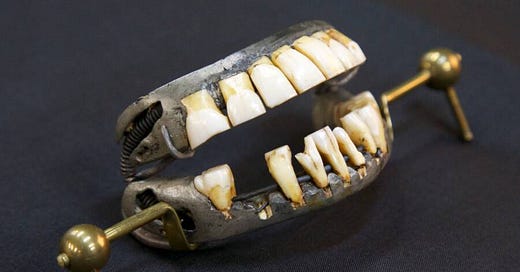


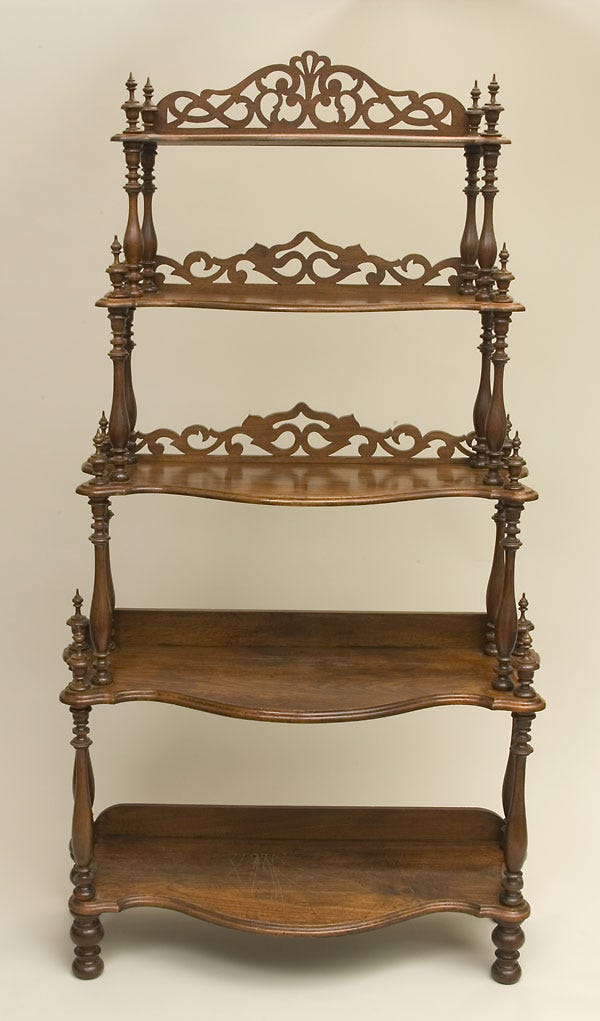
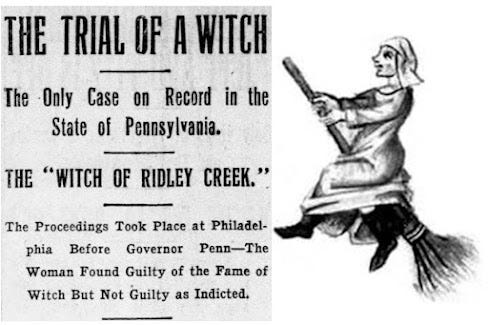
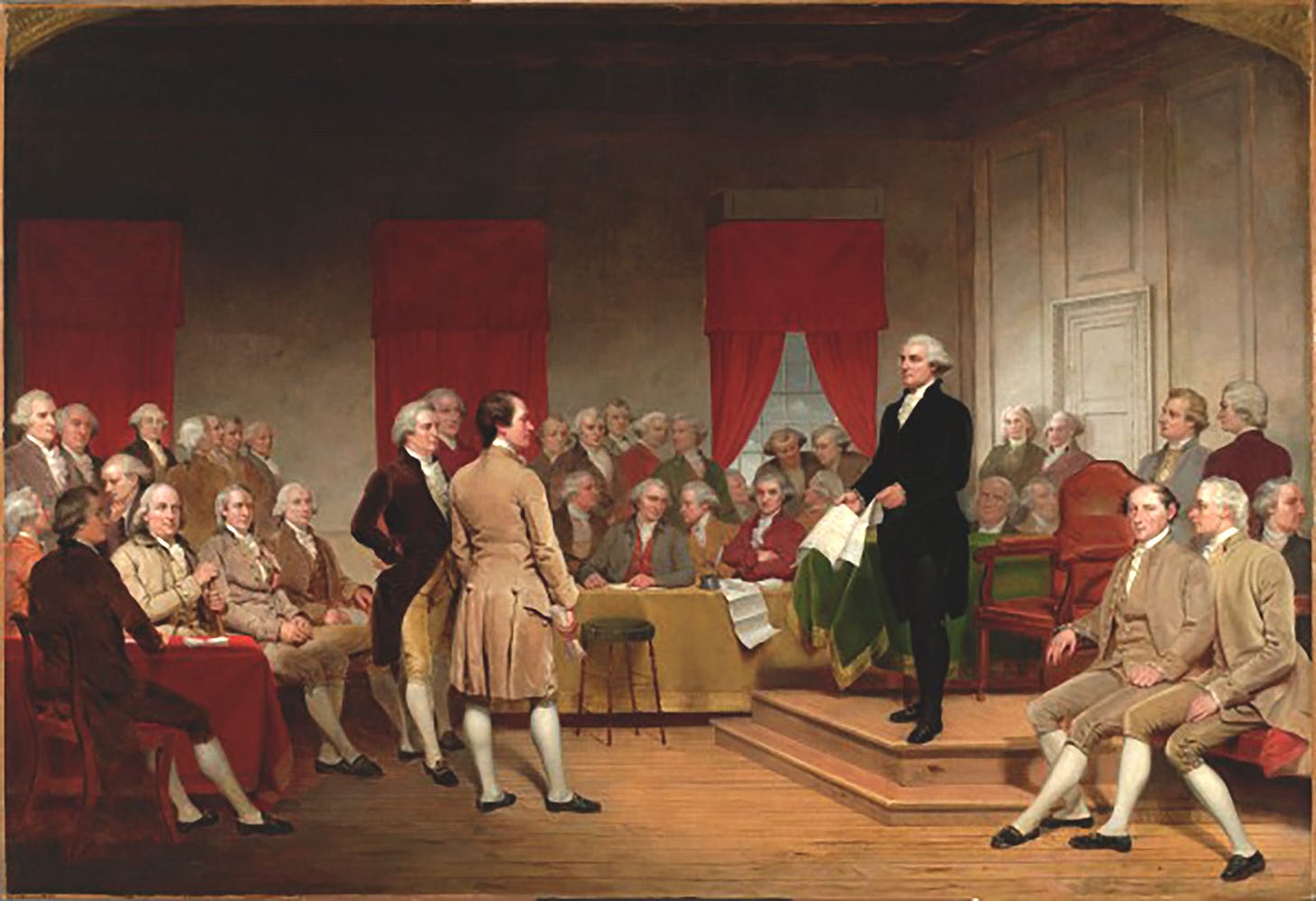

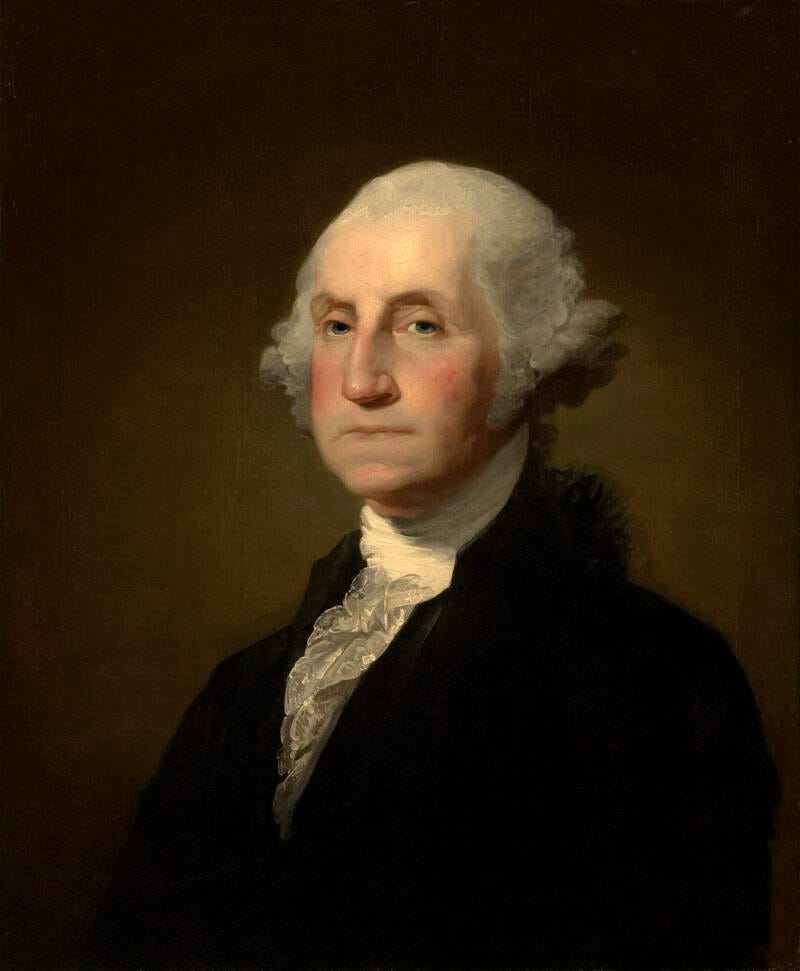
What a fascinating post - thank you!
What an intriguing and fascinating post.
These nuggets of history are that make us care about how historic figures became who they were. Real life is humbling and the “Greats’ all had their disappointments and failures that historic summaries forgive and delete.
Life comes down to being the summation of the trivia we lived through. We absorb and then become the culmination of all the little snags, the missed opportunities and glitches in life that make us unique. The details of living give the facts some soul and perspective.